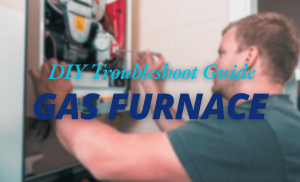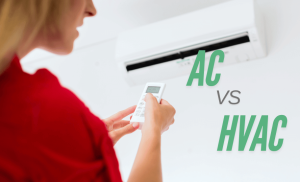As temperatures dip, a working gas furnace becomes essential to keeping your home warm and comfortable. But what happens when your furnace starts acting up? While some furnace problems may require a professional’s help, many issues can be easily resolved on your own. This guide will walk you through troubleshooting common gas furnace issues so you can potentially fix the problem before calling in an expert.

1. Furnace Won’t Turn On
If your furnace refuses to turn on, it might be due to a simple power issue or thermostat setting. Here’s what to check:
- Thermostat Settings: Ensure the thermostat is set to “heat” and the temperature is above the current room temperature.
- Power Supply: Check the circuit breaker or fuse box to ensure the furnace is getting power. Reset any tripped breakers.
- Pilot Light or Igniter: If your furnace has a pilot light, make sure it’s lit. If it’s an electronic igniter, make sure it’s not dirty or damaged.
2. Inadequate Heat Production
If the furnace is on but not heating properly, it could be due to airflow or filter problems.
- Dirty Air Filters: Clogged filters reduce airflow, which makes your furnace work harder. Replace the filter to improve airflow and efficiency.
- Blocked Vents or Registers: Make sure all vents are open and unblocked by furniture or other objects.
- Blower Motor Issues: If the blower motor is not working correctly, it may need cleaning or repair.
3. Furnace Turning On and Off Frequently
This is known as short cycling and can lead to higher energy bills and increased wear on your furnace.
- Thermostat Placement: If your thermostat is too close to a heat source, it may signal the furnace to turn off too soon. Try moving it to a more central location.
- Clogged Air Filter: A clogged filter can also cause short cycling. Check and replace the filter as needed.
- Overheating: Short cycling can sometimes indicate overheating. If you suspect this, call a professional to inspect the furnace.
4. Strange Noises
Unusual sounds coming from your furnace, like banging, rattling, or squealing, can indicate a variety of issues.
- Loose Components: Banging or rattling might mean that certain parts are loose. Turn off the furnace and inspect it for any loose screws or panels.
- Worn-Out Blower Belt: A squealing sound could indicate a worn-out blower belt that needs replacement.
- Dirty Burners: If you hear a popping sound, it could mean the burners are dirty. Clean them carefully or call a professional if you’re unsure.
5. Pilot Light Problems
If the pilot light keeps going out, or if it’s a color other than blue (usually yellow), there may be an issue.
- Thermocouple Issue: The thermocouple, which senses whether the pilot light is lit, might be faulty and needs replacing.
- Dirty Pilot Light Orifice: Dirt or debris can obstruct the pilot orifice, causing the light to go out frequently.
- Gas Supply Issue: If the pilot light won’t stay lit at all, it could be a problem with the gas supply. Contact your gas provider if needed.
When to Call a Professional
While DIY troubleshooting can fix many furnace issues, there are times when calling a professional is the best option:
- You smell gas or suspect a gas leak.
- The furnace requires major repairs or part replacements.
- The issues persist even after troubleshooting.
Final Thoughts
Troubleshooting your gas furnace can help save you time and money, but safety should always come first. If you feel uncomfortable with any step, or if the problem is beyond simple fixes, reach out to a certified HVAC technician. With regular maintenance and quick action when issues arise, your furnace will stay reliable, efficient, and ready for those colder days.












